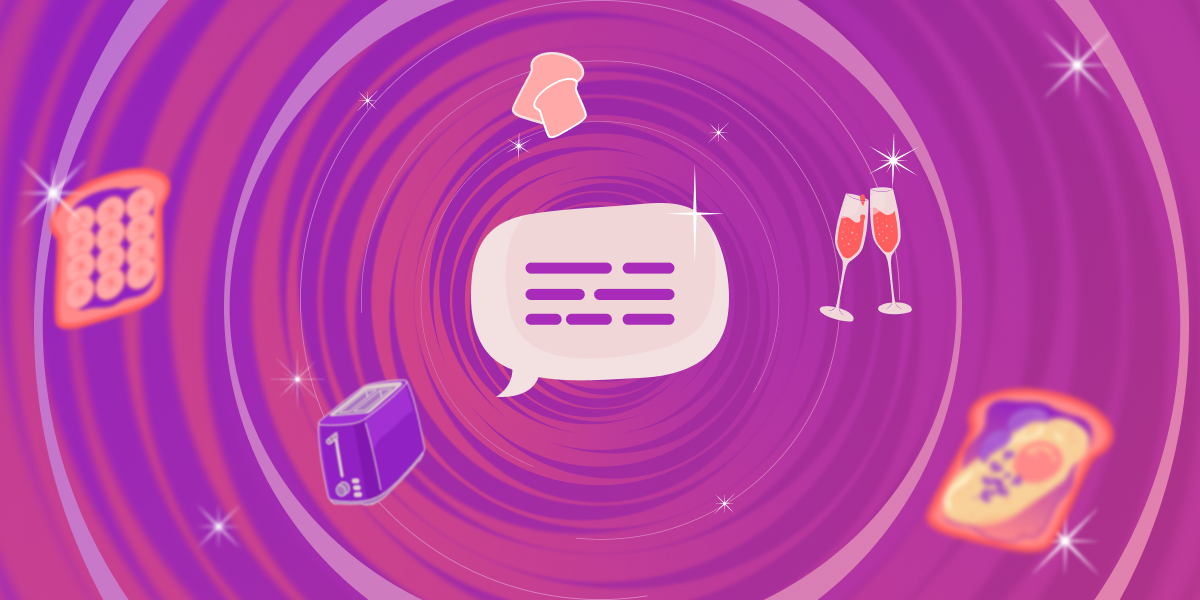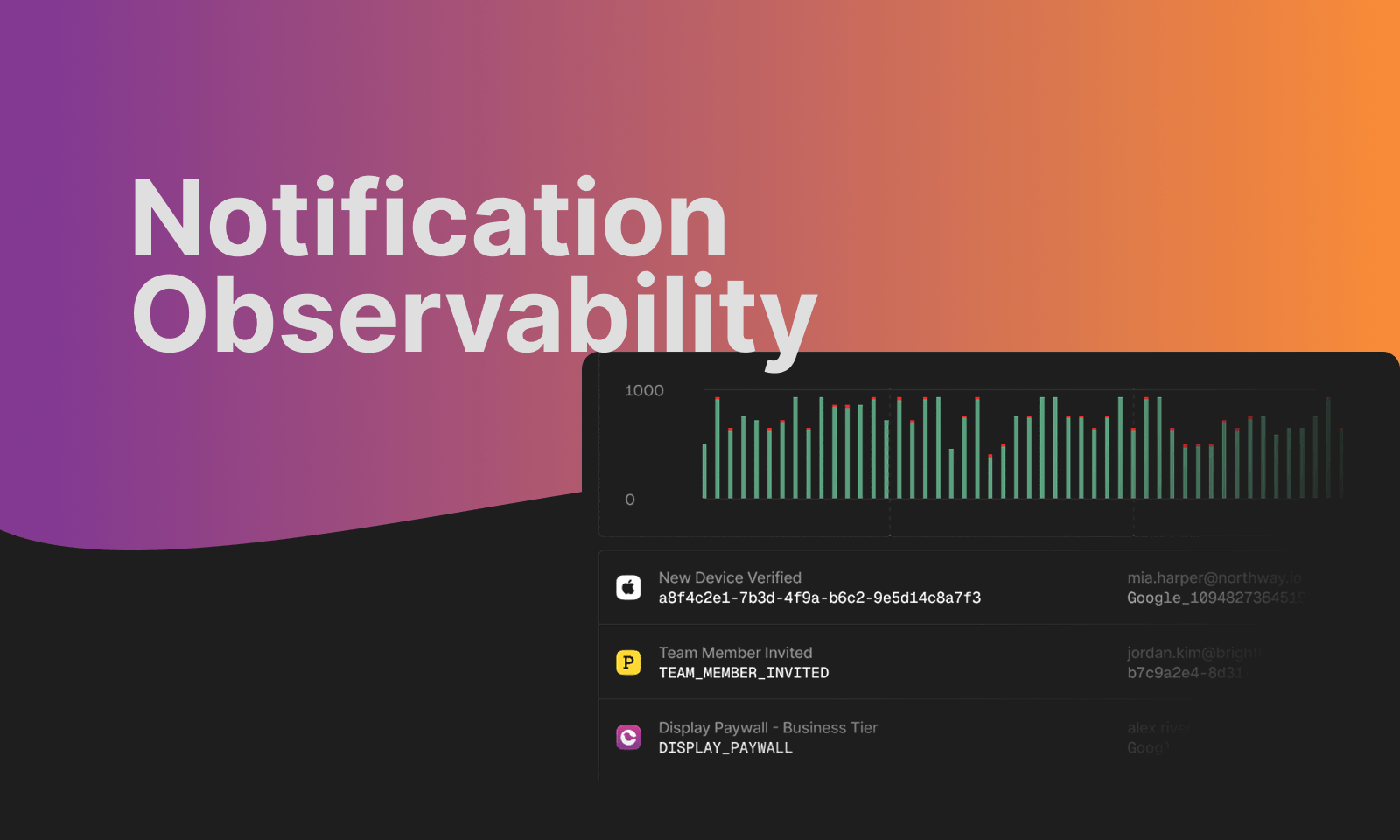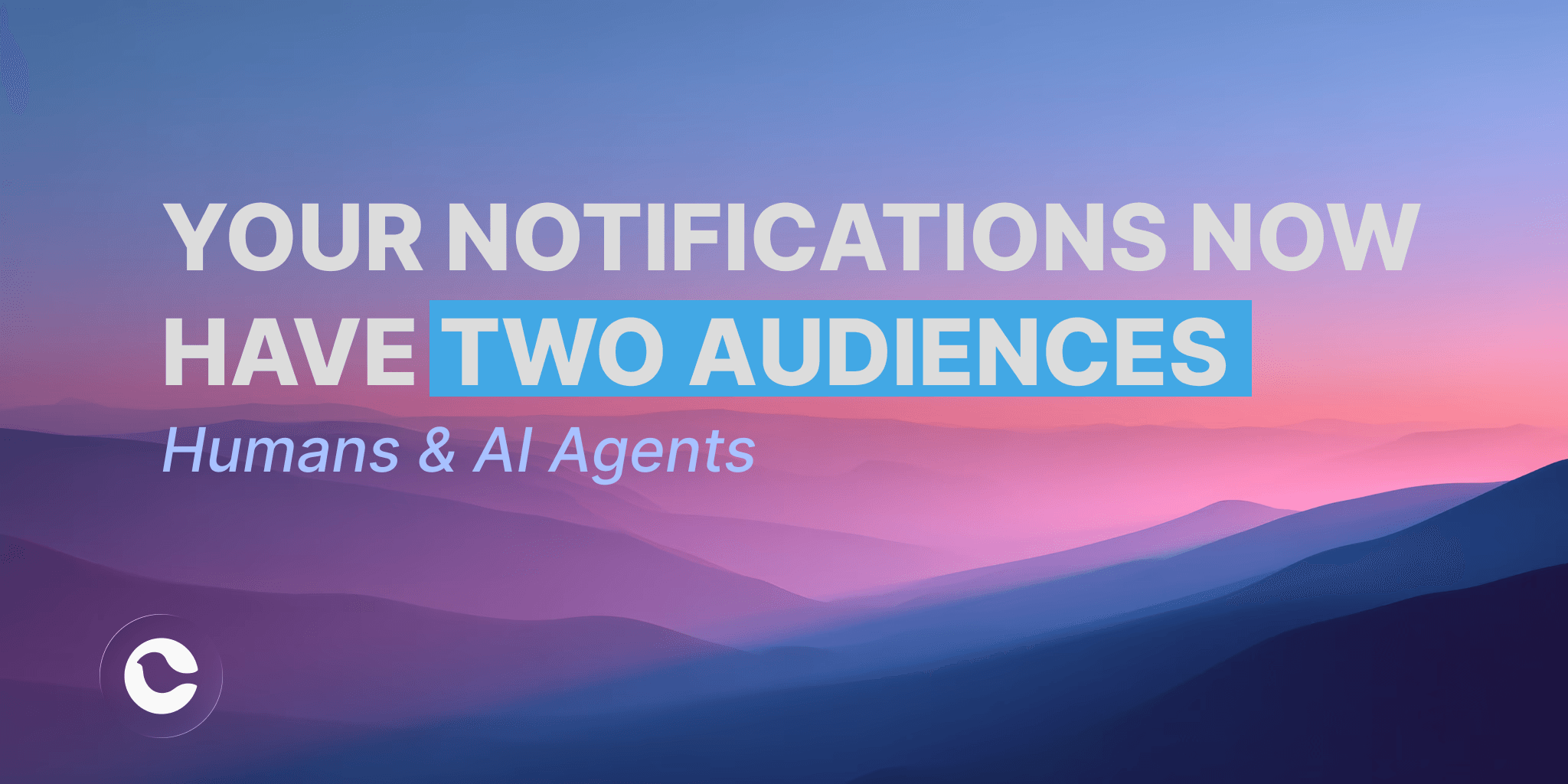Toast Messages: When to Use Them vs. Snackbars, Banners, and Push Notifications
Kyle Seyler
October 08, 2025

Table of contents
Toast Messages: What They Are, Why They Matter, and How to Use Them
In-app messaging has become an essential part of how modern products engage users, deliver feedback, and guide actions in real time. As communication standards evolve, users expect fast, relevant updates that feel seamless—not disruptive. One of the most effective patterns for this is the toast message: a short, unobtrusive notification that provides instant feedback and then disappears without requiring interaction.
Today, toast messages are a UX standard across mobile apps, web platforms, and SaaS products. They are crucial for confirming user actions, surfacing important but non-critical updates, and reinforcing positive user behaviors—all without breaking the user's focus or workflow.
When used correctly, toast notifications can:
- Improve user satisfaction by providing immediate feedback
- Support faster onboarding by guiding new users non-intrusively
- Highlight feature discovery at exactly the right moment
- Reduce friction in high-frequency actions like settings updates, file uploads, or checkouts
🚀 Ready to start building toast notifications?
Check out our new Toasts SDK — real time, customizable, and easy to integrate.
In this guide, we'll break down:
- What toast messages are and why they matter
- How toasts compare to snackbars, push notifications, and in-app inboxes
- Best practices for designing and timing toast notifications
- How Courier helps you unify toast messaging across multiple channels
If you want your product to feel faster, smarter, and more user-centered, mastering toast notifications is a key step—and an opportunity to improve engagement at every touchpoint.
Toasts vs. Snackbars vs Banners: Clearing Up the Terminology
You might notice that different platforms use different terms for lightweight in-app notifications. Here's how they generally break down:
Toast Messages are short, passive notifications that appear briefly and disappear automatically. They don't require any user action. Toasts are common in Android apps, web apps, and SaaS platforms.
Snackbars (Material Design term) are similar to toasts but often include an optional action, like "Undo" or "Retry." Snackbars still auto-dismiss if no action is taken.
Banners (iOS and other platforms) are slightly more prominent notifications that may persist until the user interacts. They’re often used for important updates like account issues or verification prompts.
While terminology varies, the goal is the same: deliver feedback or updates without disrupting the user's experience. Choosing between a toast, snackbar, or banner depends on how important the message is, and whether you want the user to take action.
| Feature | Toast Messages | Snackbars | Banners | Push Notifications |
|---|---|---|---|---|
| Primary Purpose | Provide passive, quick feedback | Provide feedback with optional action | Display important info, often requiring action | Re-engage users outside the app |
| User Interaction | No interaction | Optional action (e.g., Undo) | Optional or required actions | May open the app or deep link |
| Persistence | Disappears automatically | Disappears automatically | Persists until dismissed or acted on | Stays until dismissed or interacted with |
| Context | Inside the app | Inside the app | Inside the app | Outside the app (OS-level) |
| Typical Placement | Bottom or top of screen | Bottom of screen | Top or bottom of screen | Device notification tray |
| Best For | Confirming minor actions | Reversing quick actions, retries | Alerting users to important info like warnings or updates | Bringing users back to the app |
| Risk if Misused | Missed important feedback | Accidental action if not careful | Annoyance if overused | Intrusiveness, notification fatigue |
| Common Examples | "Settings saved" | "Message deleted [Undo]" | "Account needs verification" | "You have a new message!" |
A Closer Look at Toast Messages

Toast messages are brief, unobtrusive notifications that provide instant feedback inside an app. They appear temporarily on the screen—without requiring user interaction—and automatically fade away after a few seconds.
Most commonly used in mobile apps where screen space is limited, toast messages are also found in web applications, desktop software, and even video games. Their lightweight design makes them ideal for delivering confirmation messages, quick tips, or non-critical updates without disrupting the user's flow.
Toast messages first gained popularity on Android devices, but the concept quickly expanded beyond mobile. Today, toast notifications are widely used across platforms—including iOS libraries, web applications, and even desktop operating systems.
The primary purpose of a toast message is to deliver immediate feedback or draw attention to a specific part of the app, without interrupting the user’s experience. Toasts can be as simple as confirming a successful action ("Settings saved") or part of a broader system—like guiding users through onboarding steps, upselling features, or highlighting important updates at the perfect moment.
Although the design and behavior of toasts may vary slightly by platform, they generally follow three core principles:
- Unobtrusive: Small, subtle, and positioned out of the way of critical content
- Non-interactable: Users typically can't take action beyond letting the toast expire or manually dismissing it
- Short-lived: Toasts automatically disappear after a few seconds, keeping the interface clean
Understanding what makes a toast message effective—and knowing when it’s better to use another notification format—is key to delivering a smooth, user-friendly experience. Next, we'll explore how toast messages compare to snackbars, push notifications, and in-app inboxes.
When Toast Messages Aren’t Enough: Other Messaging Formats
Toast messages are perfect for quick, non-disruptive feedback—but not every situation calls for a toast. Depending on the urgency, persistence, and context needed, different messaging formats might serve your users better.
Let’s break down the main alternatives to toast notifications and when to use them.
In-App Notification Centers
An in-app notification center serves as a centralized place for users to review all the communications related to your product—from quick toasts and push notifications to system updates and important alerts.
Unlike ephemeral messages, notifications stored in an in-app center are persistent, allowing users to revisit information whenever they need it—even if they missed the original toast or dismissed a push.
Advanced platforms like Courier’s in-app inbox take this even further by syncing messages across channels. For example, if a user reads an email, Courier can automatically mark the corresponding in-app message as read, keeping everything aligned.
By giving users a reliable way to catch up on missed messages, in-app notification centers help improve clarity, reduce frustration, and create a smoother, more connected experience inside your app.
Ready to start building toasts and in-app notifications? Get started integrating our Toasts SDK, in-app notifications SDK, and building fully unified notification experiences. 👉 Read the docs
Snackbars: Interactive, Temporary Feedback
Snackbars are a form of in-app notification that briefly displays feedback along with an optional action—typically near the bottom of the screen.

While similar to toast messages in their lightweight, temporary nature, snackbars differ by offering users a chance to respond. Common examples of snackbar interactions include:
- "Item deleted. [Undo]"
- "Payment failed. [Retry]"
- "File uploaded. [View]"
Snackbars are ideal when you want to acknowledge an event while giving users a quick opportunity to reverse or act on it. However, because snackbars are small and short-lived, the actions they offer should be simple, safe, and easily reversible—avoiding critical or irreversible decisions.
Push Notifications: Re-Engage Users Outside the App
Push notifications allow you to reach users even when they’re not actively using your app. They’re effective for:
- Alerting users about important updates
- Reminding them to return to the app
- Notifying them of time-sensitive events
While push notifications share the brevity of toast messages, their primary role is re-engagement. They are displayed outside the app’s context, making them ideal for drawing users back after an event, promotion, or system update.
⚡ Pro Tip: Use push notifications for external re-engagement. Use toast messages for in-the-moment, inside-the-app feedback.
Persistent Messages: Email and SMS
Persistent messages—such as emails and SMS—are designed to be durable. They remain accessible to users until they manually delete or archive them, making them the best choice for information that needs to be saved or referenced later.
Common use cases for persistent messages include:
- Appointment confirmations
- Discount offers and promo codes
- Password resets and account recovery
- Legal notifications and receipts
Unlike toast notifications, which disappear quickly, persistent messages ensure critical information stays available over time. Whenever the user needs a record of an action or communication, persistent messages provide a reliable reference point.
When and How to Use a Toast Message
Toast notifications are powerful when used at the right moments—but not every user action deserves one. Here's how to decide when a toast is the right choice:
Use a toast message when you need to:
- Confirm a successful user action (e.g., "Settings saved")
- Indicate that a background process has started or completed
- Highlight a lightweight, non-critical update without disrupting the user’s flow
Avoid using a toast when:
- The user needs to take immediate action (use a snackbar instead)
- The event is critical and must be acknowledged (consider a modal or alert)
- The message needs to persist over time (use a push notification, email, or in-app inbox)
In short: Toast messages are best for providing quick feedback that reassures the user without demanding attention or action.
Choosing the right notification type ensures your product feels responsive, respectful, and easy to use—without overwhelming users with unnecessary interruptions.
Bring Every Channel Together with Courier
Toast messages are just one piece of the modern messaging puzzle. To create a seamless user experience, you need to deliver the right message, on the right channel, at exactly the right moment—whether that's inside your app, through a push notification, via email, SMS, or even Slack.
Courier makes it easy to orchestrate all of your communications from a single platform. With Courier, you can:
- Send toast messages, push notifications, emails, SMS, and Slack alerts—all from one unified API
- Customize the look and feel of every message, ensuring a consistent experience across every channel
- Build an in-app notification center that syncs seamlessly with external channels
- Manage routing, preferences, batching, retries, and fallbacks automatically—no custom code required
Whether you're confirming an action inside your app or delivering a critical update to a user's inbox, Courier helps you turn notifications into a powerful extension of your product experience.
Ready to see how easy multi-channel messaging can be?
Request a demo, read our docs, or get started for free—and send up to 10,000 messages per month at no cost.
Similar resources

Notification Observability: How to Monitor Delivery, Engagement, and Provider Health
Notification observability is the practice of monitoring notification delivery, engagement, and provider health using the same tools and discipline you apply to the rest of your application infrastructure. It means tracking whether messages are delivered, opened, and acted on across email, SMS, push, and in-app channels, then surfacing that data in dashboards alongside your other application metrics. Key metrics include delivery rate by channel, bounce and failure rates, provider latency, open rate trends, and click-through rates by template. Teams can build notification observability through DIY webhook handlers that pipe provider events to Datadog or Prometheus, log aggregation from application send logs, or notification platforms with built-in observability integrations. This matters most for multi-channel systems, business-critical notifications like password resets and payment confirmations, and teams using multiple providers with fallback routing.
By Kyle Seyler
January 15, 2026

Multichannel Notification Template Management: Version Control, Migration, and Cross-Channel Previews
AI agents are reshaping how products communicate with users. By 2026, 40% of enterprise applications will embed agents that need to send notifications across email, SMS, push, Slack, Teams, and in-app channels autonomously. Managing templates across all these channels with Git-based workflows doesn't scale. This guide covers how teams handle version control and rollback for multichannel templates, which platforms enable designer collaboration without deploys, whether Figma design systems can connect to notification builders, how to migrate templates using APIs and MCP-assisted workflows, how to preview messages across channels side-by-side, open-source options that integrate with SendGrid, Twilio, Firebase, and Slack, and how to localize content from one dashboard. Platforms covered include Courier, Novu, Knock, SuprSend, Dyspatch, Email Love, and React Email, with honest assessments of limitations for each.
By Kyle Seyler
January 14, 2026

Your Notifications Now Have Two Audiences: Humans and AI Agents
AI agents are now filtering, summarizing, and acting on notifications before users ever see them. In late 2024, Anthropic released the Model Context Protocol. By mid-2025, MCP had become the connective tissue for AI agents that take actions on behalf of users. Google followed with A2A. Agentic browsers like Perplexity Comet and Opera Neon started treating the web as something to navigate programmatically. Your notification strategy needs to account for machine interpretation, not just human attention.
By Kyle Seyler
January 05, 2026
© 2026 Courier. All rights reserved.